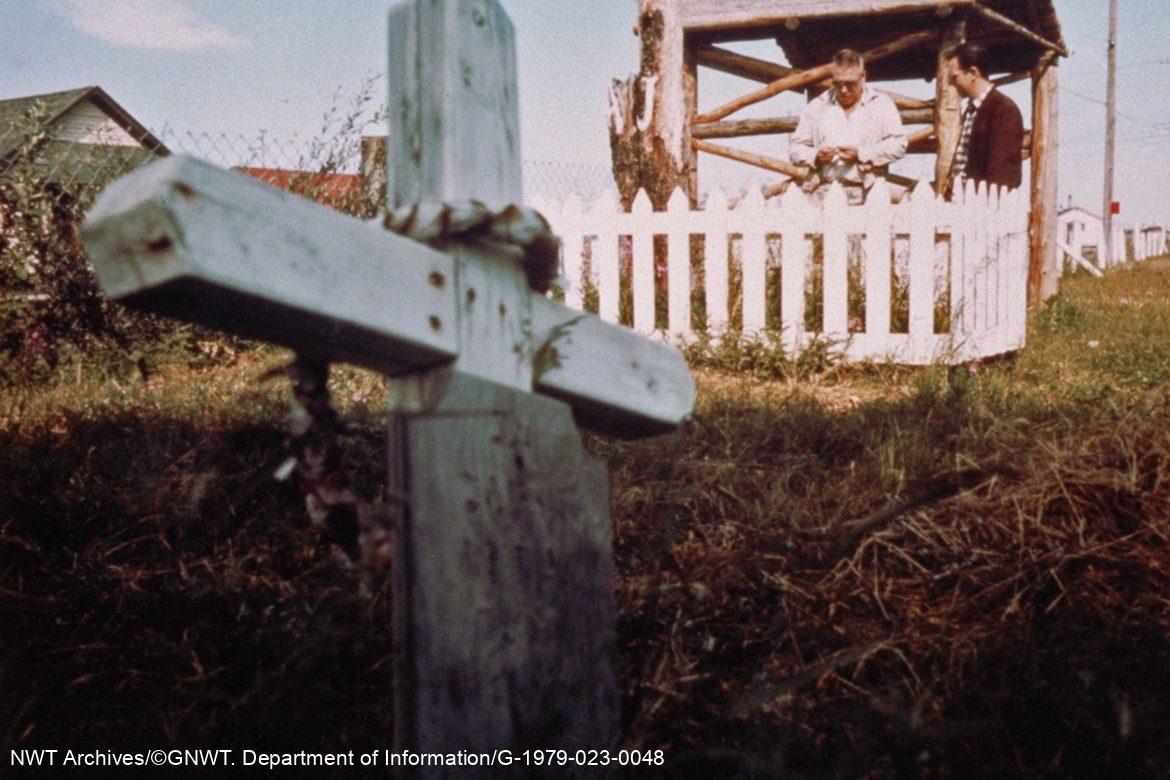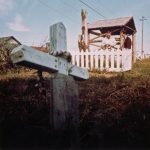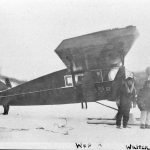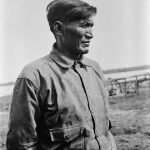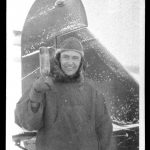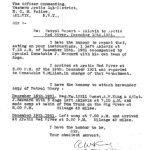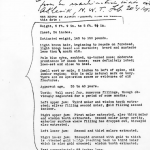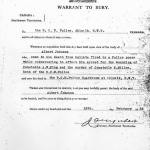1931
The Mad Trapper of Rat River
On July 9, 1931, a man calling himself Albert Johnson wandered into Fort McPherson and bought supplies from the Northern Traders store. The Royal Canadian Mounted Police kept a close eye on this stranger, a man of very few words and a secretive nature. On July 21, Constable Edgar Millen questioned Albert Johnson about who he was and where he came from. His evasive answers led Constable Millen to believe Johnson wanted to be left alone, like many other strangers who came in from the south. A week later, Johnson disappeared up the nearby Rat River.
On Christmas Day 1931, William Nerysoo walked into the RCMP post at Tsiigehtchic to report that Johnson had tampered with his traplines. The RCMP had three encounters with Albert Johnson at his Rat River Cabin while investigating these accusations. During the first encounter on December 26, 1931, Johnson refused to speak to Constables King and Special Constable Joe Bernard, so they travelled to Aklavik for a search warrant. Five days later, armed with that warrant, four RCMP officers, along with Special Constables Joe Bernard and Lazarus Sittichinli, visited a second time and surrounded Johnson’s cabin. When Constable King approached the cabin, Johnson fired through the door and wounded King. Special Constable Bernard pulled Constable King to safety. Out positioned and with a wounded officer, the RCMP team returned to Aklavik again.
The third encounter, a 15-hour siege, occurred on January 9, 1932, when a much larger and better-supplied group of local volunteers, Special Constables, and RCMP officers surrounded Johnson’s cabin. Hundreds of shots were fired into the cabin, and dynamite was used to blow off part of the roof. Johnson remained in his stronghold. Running low on supplies and food for their dog teams, the RCMP returned to Aklavik once again.
Word of the confrontation with Albert Johnson and the wounding of Constable King was relayed south through the Royal Canadian Corp of Signals station at Aklavik. This story became front-page news, and it wasn’t long before Johnson became the “Mad Trapper of Rat River.”
On January 16, 1932, the RCMP, with Special Constable Sittichinli and civilian volunteers, established a base camp 15 kilometres from Johnson’s cabin. By then, Johnson had fled, so search parties were sent out to track him down. Gwich’in people provided many of the supplies for the search. One of these search parties, led by Constable Millen, came across Johnson’s trail and cornered him in a grove of trees. Constable Millen was killed in the resulting shoot-out, and Johnson escaped.
After Constable Millen’s death, the RCMP requested an airplane join the search. Canadian Airways pilot Wop May and aircraft mechanic Jack Bowan flew north to assist the RCMP. The bush between the Mackenzie Delta and the Richardson mountains crawled with many local trappers and other searchers. Flying his Bellanca, Wop May could sort out which tracks belonged to whom in the valleys of the east slope of the Richardson Mountains. May was closing in on Johnson on February 9, 1932, when a blizzard gave Johnson time to cross the mountains into the Yukon. On February 14, Wop May spotted Johnson’s tracks on the Bell River and followed them to where they turned south up the Eagle River.
Police and Special Constables gave chase on dogsleds, and on February 17, more than a month and a half after the wounding of Constable King and more than two weeks after the murder of Constable Millen, Albert Johnson was killed during a gun battle on the ice of the Eagle River, with the shot being fired by Special Constable John Moses. The story was followed internationally via radio and print and has contributed to the image of daring bush pilots and Mounties of the NWT. It is not until recently that the role of the Special Constables in the story has been told.
